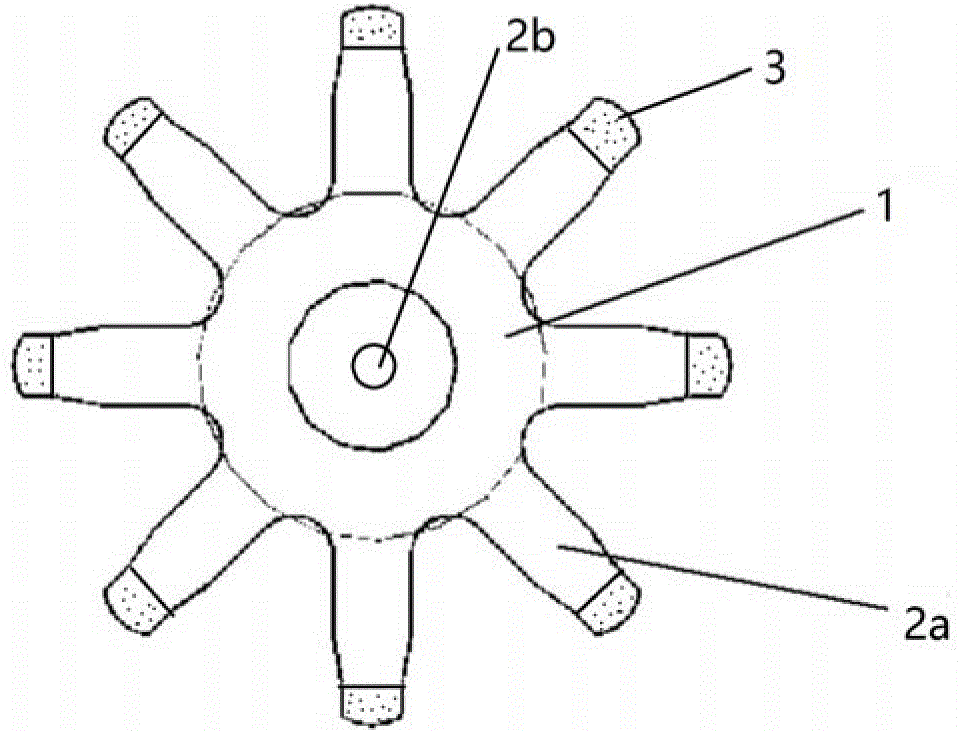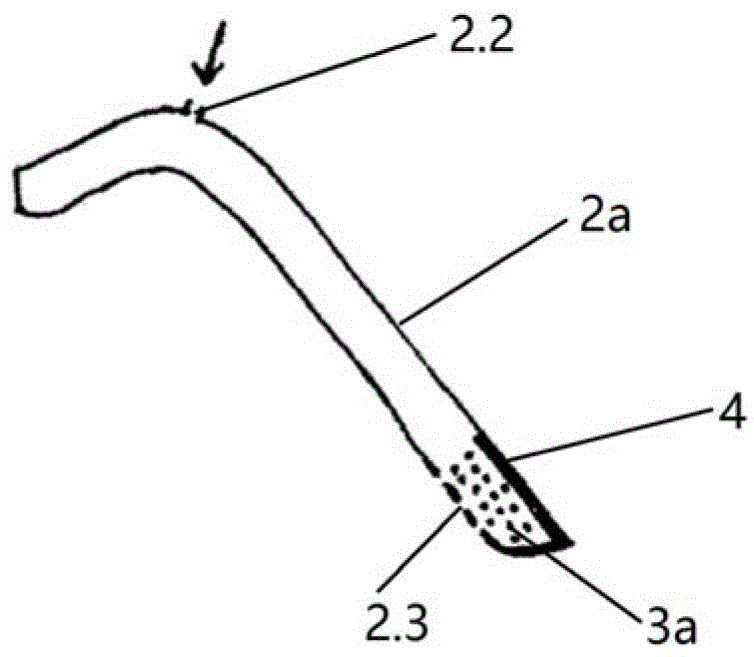Half-dry electrode, system and method for bioelectrical signal sensing
A bioelectric signal and dry electrode technology, applied in the field of EEG measurement, can solve the problems of conductive paste or viscous gel falling off, low impedance, uncomfortable use, etc., to achieve signal quality improvement, impedance and stability, and improve comfort Effect
- Summary
- Abstract
- Description
- Claims
- Application Information
AI Technical Summary
Problems solved by technology
Method used
Image
Examples
Embodiment 1
[0037] Embodiment 1 is a basic embodiment of the present invention.
[0038] Such as figure 1 , 2 , 5, and 7, a semi-dry electrode for bioelectric signal sensing, including a supporting base 1, at least one supporting leg 2 and an ion slow release body 3; the supporting leg 2 is attached to the supporting base 1. And extend from the support base 1, which supports the sensor element 4 arranged at the tail end; the ion slow release body 3 contains a conductive liquid, and slowly releases the conductive liquid to present a semi-dry surface to the subject; The ion sustained-release body 3 or the conductive liquid released by it is at least partially in contact with the sensor element 4, and the bioelectric signal is transmitted from the subject through the ion sustained-release body 3 to the transmitter Sense element 4 on.
[0039] The advantages are: the conductive liquid slowly released by the ion slow release body 3 wets the skin to be tested, which is conducive to the formation of...
Embodiment 2
[0041] Example 2 is a further improvement on the basis of Example 1.
[0042] Such as figure 1 As shown, the supporting leg 2 is a claw-type supporting leg 2a, which can pass through hair quickly and effectively. The claw-type support leg 2a extends outward from the support base 1 in a direction that is not perpendicular to the support base 1, and its tail end forms a non-perpendicular angle with the skin to be tested.
[0043] The prior art electrode supports such as electrode caps, strips, etc. usually provide a force perpendicular to the direction of the skin to be tested. In the present invention, the claw support leg 2a is oriented in a non-vertical direction relative to the skin to be tested. Under the action of, it will deflect to the horizontal direction, so that the claw-type supporting leg 2a slides on the skin to be tested, thereby forming good contact with the skin. When the claw support legs 2a are in contact with the subject's skin under pressure, at least one of the...
Embodiment 3
[0045] Example 3 is a further improvement on the basis of Example 1.
[0046] The only difference from Example 2 is that Figure 5 As shown, the supporting leg 2 is an annular supporting leg 2c.
[0047] The advantage is that the bending action can be better limited to the radial and outward direction relative to the support base 1. In addition, the sensing element 4 can be made into a ring part, which enables the sensing element 4 to bend under pressure conditions And provide better comfort and larger skin contact area.
PUM
 Login to View More
Login to View More Abstract
Description
Claims
Application Information
 Login to View More
Login to View More - R&D
- Intellectual Property
- Life Sciences
- Materials
- Tech Scout
- Unparalleled Data Quality
- Higher Quality Content
- 60% Fewer Hallucinations
Browse by: Latest US Patents, China's latest patents, Technical Efficacy Thesaurus, Application Domain, Technology Topic, Popular Technical Reports.
© 2025 PatSnap. All rights reserved.Legal|Privacy policy|Modern Slavery Act Transparency Statement|Sitemap|About US| Contact US: help@patsnap.com



